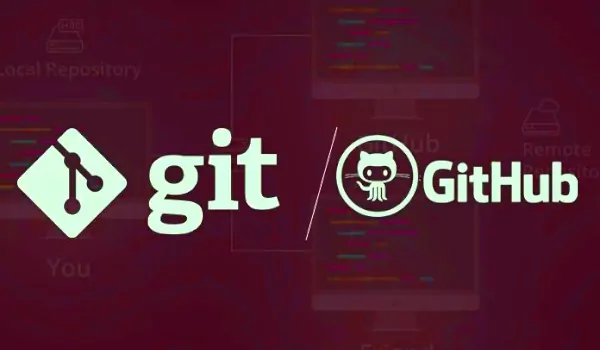What Is GitHub — From What It Is to How to Use It
The world of programming is surprisingly wide, and thanks to the advancement of technology and the widespread use of computer science in other fields, many problems across various fields can be solved through coding and building the required software. However, the question arises, “What is the best way to present a programming and software Development project?”
Unlike other fields, presenting a research paper or blog post may not be sufficient to describe the activities that occurred during a project’s programming process and the features of the developed program. Therefore, there is a need for a more advanced tool for version management and project organization.
In response to the question, “What is GitHub?” We can briefly say that “GitHub” is a version control system. We will explore the concept of a version Control System as well as other related issues.
What are the prerequisites for learning GitHub?
In this section, we have reviewed some introductory concepts and topics related to GitHub, including the “Version Control Systems” concept, which will provide you with helpful information.
What is a version control system?
“Version Control System” is a tool that helps developers manage changes to files and directories (files and folders). There are several version control systems, one of which is called Git.
“Version control,” also known as “source control,” is used to maintain multiple versions of the source code. In other words, this system tracks the changes made to the source code over time.
The application of the version control System is not limited to this, and the possibility of programmers’ participation and cooperation with each other, as well as the deployment of source code from local computers to “Staging Servers”, then to “Testing Servers”, and finally to “Environment” for “production”. The version control System is an integrated tool that allows us to deploy our code in the cloud.
It should be noted that “staging” servers are used to safely test applications in an environment similar to the production environment and help to discover software problems before the product is released.
What are the applications of the version control system?
“Version control” provides features to the programmer that make the software Development process easier. We have listed these items below:
Git training, Git Hub, and Git Lab (free)
Backup: As the project progresses, we save the work done.
Record keeping: We compare the project’s current version with a desired version (that we have already made).
View changes: We accurately track changes in the project, line by line.
Collaboration: “Version control” allows multiple users to contribute to and collaborate on a specific project simultaneously, avoiding potential interference, such as accidentally overwriting one user’s work with another user’s.
What are the advantages of a version control system?
Using version control in web Development has many advantages, some of which we will review below.
No data is lost. The way data is stored in Git is that it never gets lost.
It’s easy to go back to any part of an existing history. Git stores a history of changes and allows users to revert to a desired version.
It makes it easier to avoid rewriting. Git will automatically notify you when your work conflicts with another job.
Changing the dimensions of work has become easy. Git makes project scaling easier by synchronizing work across teams.
Who uses version control?
The version control System can be used by the people listed below.
- DevOps teams
- Software Development teams
- Engineering teams
- Data science teams
- Other people specializing in technology
What are the types of version control systems?
Version control systems include two categories: “Centralized” and “Distributed”.
What is a centralized version control system?
In Centralized Version Control Systems (CVCS), all project contents are stored on a central server. Each user receives the code from the “Master Repository” or server and sends the changes made to the central version. So, to register any changes, we need to connect to the server. Centralized version control is easier to learn than distributed version control.
What is distributed version control?
The “Distributed Version Control Systems” (DVCS) mechanism is similar to centralized version control mechanisms. The most significant difference between the two is that in the centralized version, instead of a single repository on the server, each programmer keeps a “copy” of the entire history on their local computer.
The distributed version control System is more complex and much faster than its centralized version. It does not rely on network performance and provides offline access.
What is a gate?
Despite what is shown about the lives of programmers in movies and the general public’s image of developers as isolated and distant from social life, social life and cooperation (participation) play a significant role in this group. By the way, Git and GitHub are used as tools for this and for collaboration among programmers.
Git is a free and open-source” distributed version control system” that tracks changes to any computer File set. One house of Git is to coordinate programmers who work on a standard source code and collaboratively advance the project’s Development process. Git’s goals include high speed and data integrity.
Git was written by Linus Torvalds in 2005 to develop the Linux kernel. Of course, other kernel developers also contributed to the design and creation of its initial version. This SysSystem is licensed under the GPL2 license and is maintained by Junio Hamano. In the following, we will briefly review some of the Git terms together.
What is a Repository?
“Repo,””Repository,” or “Repository” refers to a collection of files and folders that we will track with Git. In other words, the repository stores the history of changes made by the project team.
What kind of tool is GitHub?
GitHub is one of the most popular remote storage solutions for Git repositories. It also allows us to set project access permissions, track and submit bugs, subscribe to repository notifications, use a GUI instead of the command line, and more. Typically, repositories are published as “Public”, but we can also have “Private” repositories by paying a fee.
What does commit mean in Git?
The term “commit” refers to the process of saving changes to a project. Note that commits are on the local SysSystem until pushed to the remote repository.
What is meant by push in Git?
The “push” action implements the “commit” action. I” Pushing is done to synchronize our commits with the cloud platform (or GitHub). We can push multiple commits.

What is meant by Branch in Gate?
If we consider the Git repository a tree, the trunk is regarded as the “Master Branch.” We also call the branches of this tree “BBranches.”Branches are separate instances of code that branch off the main code.
Creating a branch may be necessary to add a new feature to the project or for testing purposes. This maintains the integrity of the project and allows for reverting to the previous state in case of sabotage. Branching will also enable us to do our own work without disturbing others’ work (or vice versa).
What is the meaning of Merge in Git?
When the desired branch is complete (the desired Development is done, and its bugs are fixed as much as possible) and is ready to become part of the main code of the project, we can merge it into the “Main Branch” (Main Branch). Merge). A “merge” is nothing more than combining two branches so that our new or updated code becomes an official part of the main codebase, and anyone who creates a branch from the point of the merge onwards. Our codes will be a part of it.
What does Clone mean in Git?
Cloning copies the entire online repository to our local machine. There are many reasons for this, the most important of which can include starting a project from a faulty repository, switching workstations, or starting mid-project with a new team.
FAQ
What is GitHub used for?
GitHub lets you store and manage your code repositories online — tracking changes over time, collaborating with others, and maintaining version history.
How do I start using GitHub?
Sign up for an account, create a new repository (public or private), and use Git (locally or via desktop apps) to clone the repo, make changes, commit them, and push updates back to GitHub.
What features does GitHub offer beyond just storing code?
It supports branching and merging, pull-requests for code reviews, issue and bug tracking, documentation (README, wikis), and collaboration workflows — helping teams coordinate, manage tasks, and track progress.
